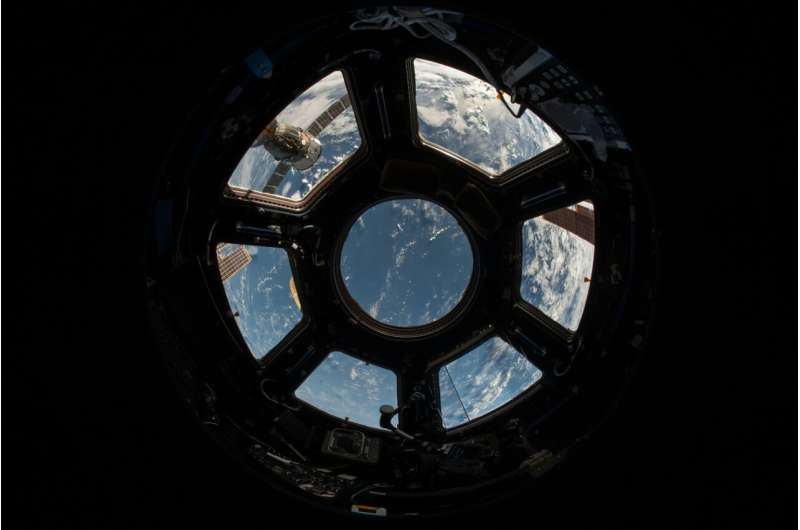This article has been reviewed according to Science X's editorial process and policies. Editors have highlighted the following attributes while ensuring the content's credibility:
fact-checked
reputable news agency
proofread
NASA explains strange noise heard by astronaut in Boeing's Starliner

There's nothing to see here, or hear here, actually. That's the message NASA gave after reports of a strange noise heard by astronaut Butch Wilmore emanating from Boeing's Starliner docked to the International Space Station this weekend.
"A pulsing sound from a speaker in Boeing's Starliner spacecraft heard by NASA astronaut Butch Wilmore aboard the International Space Station has stopped," NASA posted to its social media accounts Monday.
It explained the mystery noise as feedback from the speaker that was the result of an audio configuration between the spacecraft and the ISS. Wilmore reported the sound as he was working inside Starliner on Saturday.
"The space station audio system is complex, allowing multiple spacecraft and modules to be interconnected, and it is common to experience noise and feedback," NASA stated. "The crew is asked to contact mission control when they hear sounds originating in the comm system."
NASA also took the opportunity to state the feedback has "no technical impact to the crew, Starliner, or station operations, including Starliner's uncrewed undocking from the station no earlier than Friday, Sept. 6."
Wilmore is one of two NASA astronauts along with Suni Williams who flew up to the ISS aboard Starliner, which docked on June 6 on day after launching from Cape Canaveral Space Force Station atop a United Launch Alliance Atlas V rocket.
Because of issues with thrusters and helium leaks with Starliner's propulsion module, though, NASA kept delaying its return, which was originally supposed to occur after about eight days docked to the ISS. Instead, NASA has opted to send Starliner home without crew.
Williams and Wilmore will remain on the ISS joining Expeditions 71 and then 72, not flying home until next February as part of the SpaceX Crew-9 mission.
Starliner's departure will make room for Crew-9's Crew Dragon Freedom and its two crew of NASA astronaut Nick Hague and Russian cosmonaut Aleksandr Gorbunov. Crew-9 is flying up with just two instead of the normal four so that Williams and Wilmore can have a ride home.
Starliner, meanwhile, is targeting a landing after a six-hour flight back to Earth with a desert touchdown target of White Sands Space Harbor in New Mexico at 12:03 a.m. Sept. 7. After the parachute and air-cushioned landing, it will be shipped back to Boeing's Starliner factory at Kennedy Space Center.
Boeing was attempting to complete Starliner's Crew Flight Test, the first for the spacecraft with humans on board, so that it could be certified for regular service to the ISS alongside SpaceX's fleet of Crew Dragons as part of NASA's Commercial Crew Program.
The two companies won the contract back in 2014, awarding Boeing the greater amount of $4.2 billion and SpaceX getting $2.6 billion, each to fly an uncrewed test flight, a crewed test flight and six operational missions.
SpaceX managed to complete its crewed test flight in 2020 and has since flown up eight operational missions, having received further contract awards.
Certification of Starliner remains a question mark since the original contract called for the crewed test flight to manage both a flight up and down with astronauts. Boeing cannot collect on the majority of the $4.2 billion until certification is given and has spent more than $1.6 billion on development to date.
NASA still wants redundant services for the service as the ISS has an operational lifespan through 2030.
2024 Orlando Sentinel. Distributed by Tribune Content Agency, LLC.





















